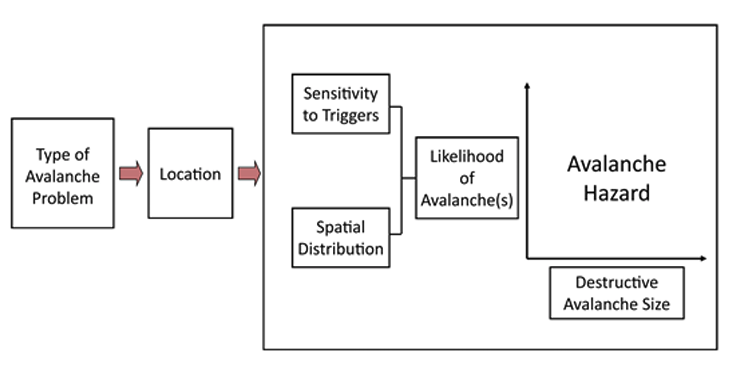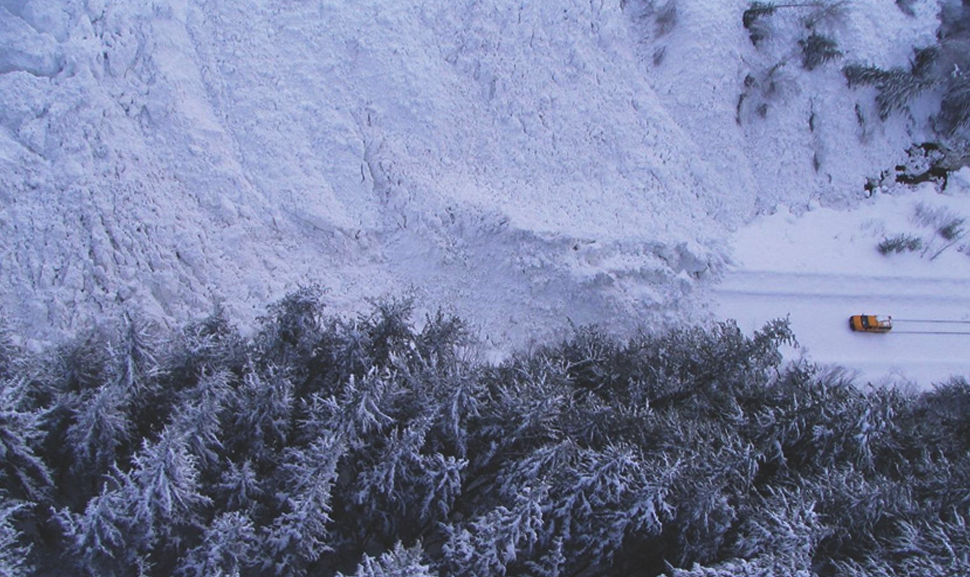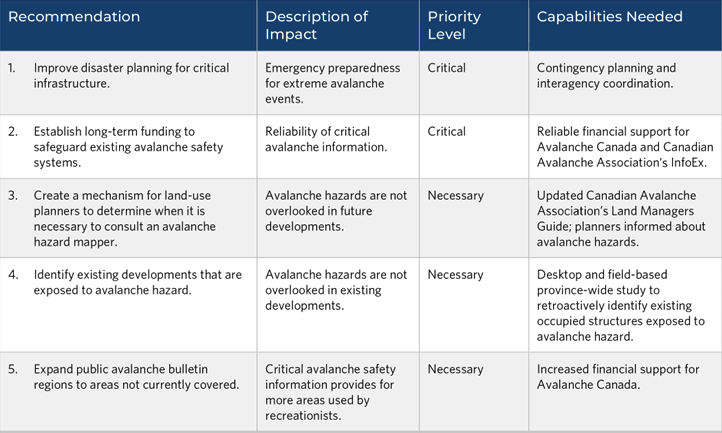1. Technical guidelines for planning and operational avalanche risk assessment and mitigation:
Canadian Avalanche Association. Technical Aspects of Snow Avalanche Risk Management – Resources and Guidelines for Avalanche Practitioners in Canada. Revelstoke, Canada: Canadian Avalanche Association, 2016. https://www.avalancheassociation.ca/resource/resmgr/standards_docs/ tasarm_english.pdf
2. A book outlining field and desktop methods for planning-level avalanche risk assessment and mapping:
Jamieson, Bruce. Planning Methods for Assessing and Mitigating Snow Avalanche Risk. Revelstoke, Canada: Canadian Avalanche Association, 2018.
3. Technical background material on avalanche formation and release, including forecasting and mitigation:
McClung, David, and Peter Schaerer. The Avalanche Handbook. 3 ed. Seattle, USA: The Mountaineers, 2006.
4. Summary and analysis of fatal avalanche accidents in Canada:
Stethem, Chris, and Peter Schaerer. Avalanche Accidents in Canada I – a Selection of Case Histories of Accidents, 1955 to 1976. NRCC Publication 18525. Ottawa, Canada: National Research Council of Canada, 1979.
Stethem, Chris, and Peter Schaerer. Avalanche Accidents in Canada II: A Selection of Case Histories of Accidents, 1943 to 1978. NRCC Publication 18525. National Research Council of Canada, 1980.
Schaerer, Peter. Avalanche Accidents in Canada III. A Selection of Case Histories 1978-1984. NRCC Publication 27950. National Research Council of Canada, 1987.
Jamieson, Bruce, and Torsten Geldsetzer. Avalanche Accidents in Canada, Volume 4, 1984-1996. Revelstoke, BC, Canada: Canadian Avalanche Association, 1996.
Jamieson, Bruce, Pascal Haegeli, and David Gauthier. Avalanche Accidents in Canada, Volume 5, 1996-2007. Vol. 5, Revelstoke, Canada: Canadian Avalanche Association, 2010.
5. Freely available online avalanche tutorial for backcountry recreationists: Avalanche Canada. “Avy Savvy – Avalanche Canada’s Online Avalanche Tutorial.” https://avysavvy.avalanche.ca/en-ca.





 Figure 1: An explosive controlled avalanche at the Galore Creek Project located in northwestern British Columbia, Canada (Photo: Wayne Ball).
Figure 1: An explosive controlled avalanche at the Galore Creek Project located in northwestern British Columbia, Canada (Photo: Wayne Ball).




